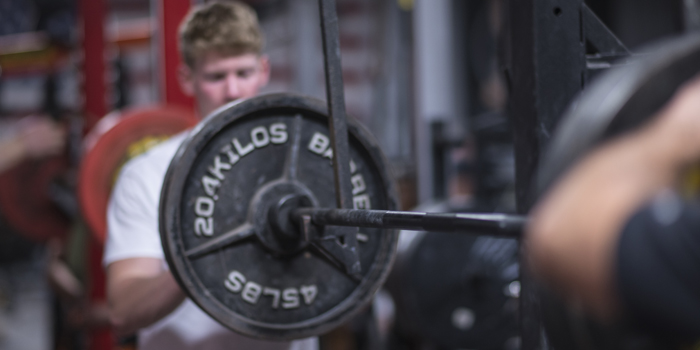
I have been very fortunate in my career to be in the right place at the right time to have great mentors. My first boss, Rick Perry, did a fantastic job of teaching me the proper technique for various exercises. He taught me what each lift should look like and various cues to use, based on the performance of the lift, if it didn't look right. He also offered up a number of alternative exercises if it didn’t look right from the coaching cues. I remember in particular one defensive tackle who could not maintain his lumbar spine position during a Romanian deadlift. We cued and cued and cued, and nothing fixed it. Eventually, Rick just swapped it out for a different exercise.
Unfortunately, though, there is only one Rick Perry, so most people have not had that guidance. They don’t know what you should do if the athlete's heels come up on a squat, or if the athlete is jumping back on a clean, or how to change the technique on a bench press to keep the butt from raising off the bench. I’ve always been one to be vocal in my opinion that if you see something that needs to be changed, it is up to you to do it. I think this is one of the reasons that Dave Tate and his motto of “Live, Learn, Pass On,” resonated so well with me. I lived it, I learned it, and I feel that it’s my duty to pass it on to the next generation of coaches.
Several years ago I joined the team to make a course for the NSCA that essentially mass-produces the experiences that I had with Rick. We put together a course called the Foundations of Coaching Lifts. It offers step-by-step instruction that teaches the attendees what a lift should look like, how to cue it, and how to use coaching progressions to take an athlete from never having done the lift before to being able to master it through exercise progressions. For example, if an athlete has never squatted before, there is a proper progression that goes from bodyweight to back squat with several intermediary steps for them to master. This course was put together by several people who have a great amount of experience and are very passionate about the field such as myself, Bo Sandoval, Mike Favre, Mark Watts, Megan Young, Scott Sahli, Patrick McHenry, Ashley Jones, Matt Shaw, Mia Jackson, Greg Haff, Doug Berninger, and several others whom I can’t remember because I’m dealing with altitude sickness as I’m writing this in the Performance Center of the NSCA for the TSAC Leaders Course.
This course was thoughtfully put together to be a starting point for coaching technique, which should be a cornerstone in program development for not just strength and conditioning professionals but also anyone who plans on teaching these fundamental lifts to individuals (tactical, personal trainer, educator, etc.). I will say that this course is not intended to be an end all, be all. However, it is a starting point that gives attendees the fundamentals so they can step confidently into an internship or their first job and continue their education. To make the course manageable time-wise, it has been limited to four major lifts: the squat, bench press, push press, and power clean. The course takes about two days, with the second half of day two reserved for the final coaching assessment, leaving plenty of time to travel and get home over the course of a weekend.
For those who are new to coaching or haven’t had a lot of exposure to mentors who gave them this sort of information, the course is worth its weight in gold (with the time I spent working on it, I am biased). The courses are held across the country and include standardized instructors and materials to ensure consistency from instructor to instructor and location to location. To learn more about this opportunity, check out event locations here.









1 Comment